Student Blog
What are OS/OT?
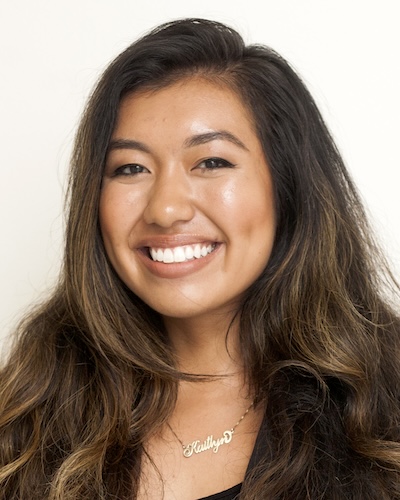
So Nice, I Graduated Twice ⟩
May 11, 2018, by Kaitlyn
Life Hacks What are OS/OT?
Channeling my inner Elle Woods, I first off want to squeal and tell my fellow class of 2018, “We did it!!!”
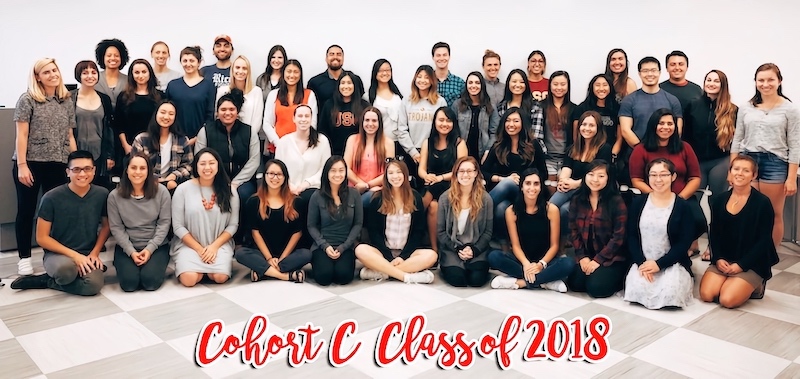
Class of 2018: Cohort C
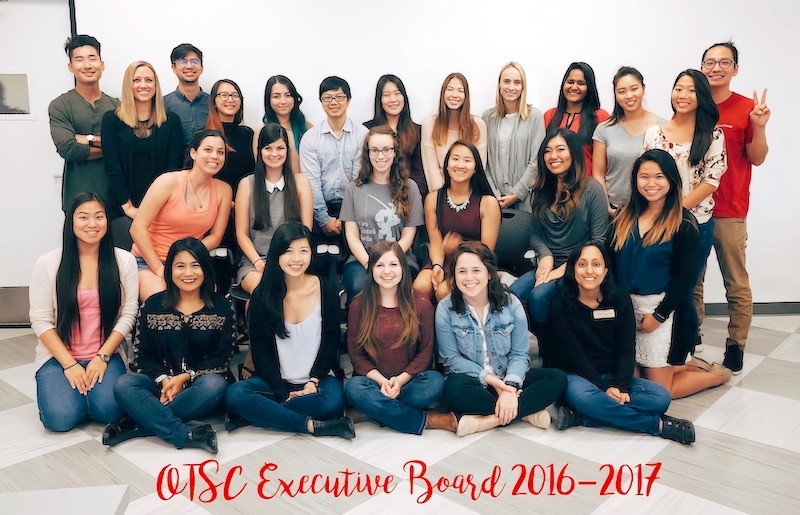
My first year on OTSC Executive Board
These past two years have been such a whirlwind, and I’ve had so many highlights that I know I’ll remember for a long time. I’ve stood in front of and presented to the largest crowds I’ve ever spoken to (upwards of 200+ individuals at a time), attended 5 conferences under scholarship across numerous cities and states, went on a Eurotrip with some of my best friends in the program, lived across the Pacific Ocean for three months (the longest I’ve ever been away from home, my friends, and my family), and learned about what it means to be the best occupational therapist I can be. Interspersed in these bigger events, life bestowed upon me lessons about myself, people, and life in general. I’ve learned and grown so much not only as an aspiring OT, but also as a person.

The Student Ambassador Team
Looking back on my experience in graduate school, these are a few things I would tell (and remind) myself. If you’re thinking about going to OT school as well, it may be helpful for you too:
Relax and do your best. You will be fine. | Work hard and do your best obviously, but don’t stress out too much about it. That 1 point you got off a test or assignment will not matter 20 years from now.
The power of influence (both good and bad) | You will meet so many people who you both will inspire and be inspired by. For the people you are inspired by, choose wisely. For the people you inspire, make sure you not only say what you mean, but live it out too. People are always watching, and what you do trumps what you say every time.
Remember your core values and live accordingly. | You will make a core values checklist during your first semester in the program. Look at it often. Are you living in a fashion that is congruent with what you believe?
Get to know the people around you and create meaningful relationships with them. | Again, you will meet so many different people. Get to know your peers, colleagues, friends, mentors, clinical instructors, and so on, on a deeper and more meaningful level. This life is about creating meaningful relationships.
Walk through doors that open up for you and take opportunities that fall into your lap. | Trust me, it will happen and it might even be a little scary. Everything happens for a reason!
Always remember the big picture. | You are in school because you want to positively change people’s lives and help them live life to its fullest. This is always the goal.
Remember to take care of yourself, have fun, and live your best life! | True: school is going to take up a huge chunk of your life. Also true: remember to live YOUR life too.

My amazing and incredibly supportive family!
I recognize there is absolutely no way I could have gone through graduate school alone. I am so thankful for Kimberly Kho and the Admissions team for providing guidance and support professionally and personally, my amazing Student Ambassador team (Ali, Erika, Caroline, Linah, and Bryan) for being the best group of people I could’ve ever asked to work with and for making what we do that much more fun and rewarding, the OTAC Student Delegate council for connecting me with OT throughout the entire state of California, OTSC Executive Board for being such an inspiring group of leaders, crazy Cohort C for being the most fun classmates to go through the program with, the Division’s faculty for always going above and beyond what is expected inside and outside of the classroom, and of course, my incredible and loving family and friends for helping me up through the lowest days and for walking alongside me during the happiest ones.
Thank you again USC Chan Division of Occupational Science and Occupational Therapy. What a journey it’s been, and I can’t wait to see where life takes me next.
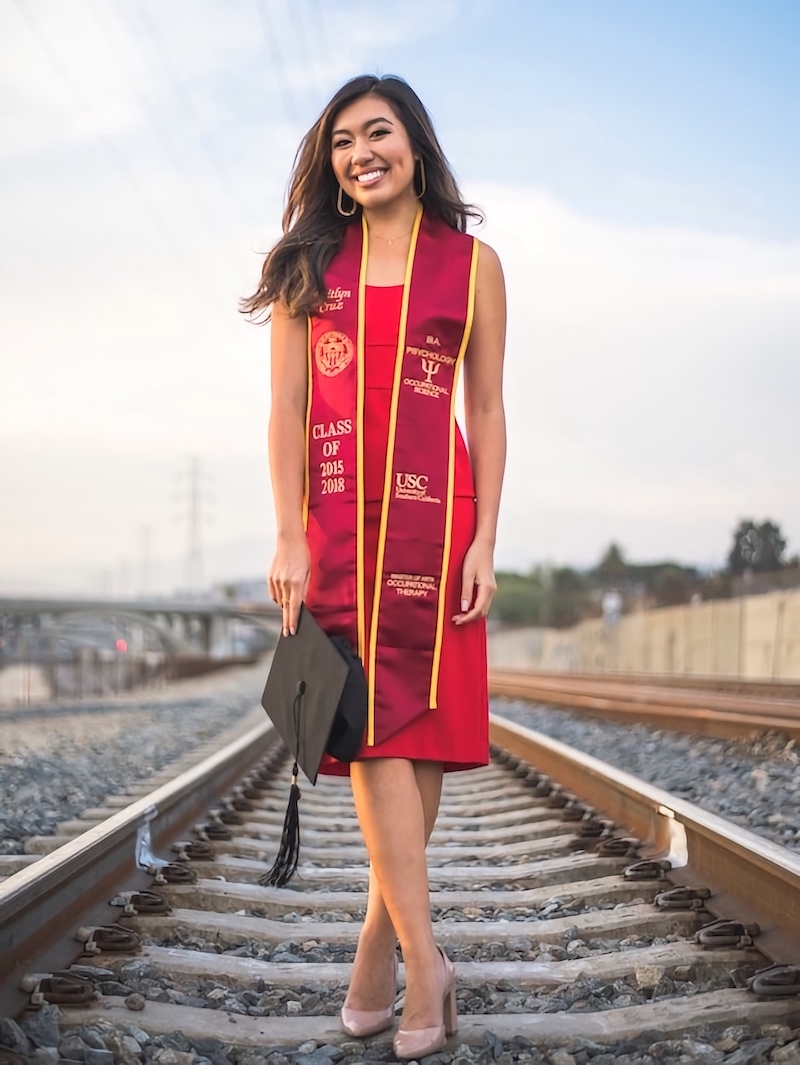
⋯
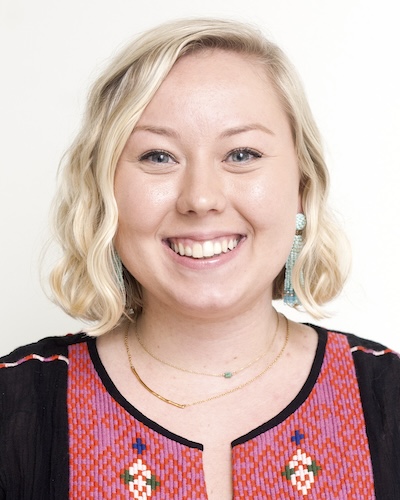
Final Reflections and Next Steps ⟩
May 4, 2018, by Caroline
Beginnings and Endings What are OS/OT?
I can’t believe I’m really saying this, but I’m officially done with ALL of my classes in the Entry-Level Master’s Program! I want to take this final blog post to reflect on the past two years in the program, and to share what’s coming up next for me! Warning: this one gets a little sentimental.
Over the past 2 years:
I’ve taken (and passed!) 22 classes. That’s included countless exams and the 4 Ps (papers, posters, presentations, and projects). Those classes have included so many opportunities for group work, which have encouraged me to see multiple perspectives, enhanced my communication skills, and have given me the chance to get to know so many of my classmates on a deeper level. Each class covered a different topic; I’ve learned about specific practice immersion areas, research methods, program development, leadership, therapeutic use of self, and so much more! I used this Spring semester to take elective courses to dive into pediatrics, the practice area I’m most interested in. Altogether the curriculum has prepared me to be a general practitioner, ready to work as an OT in any practice area.
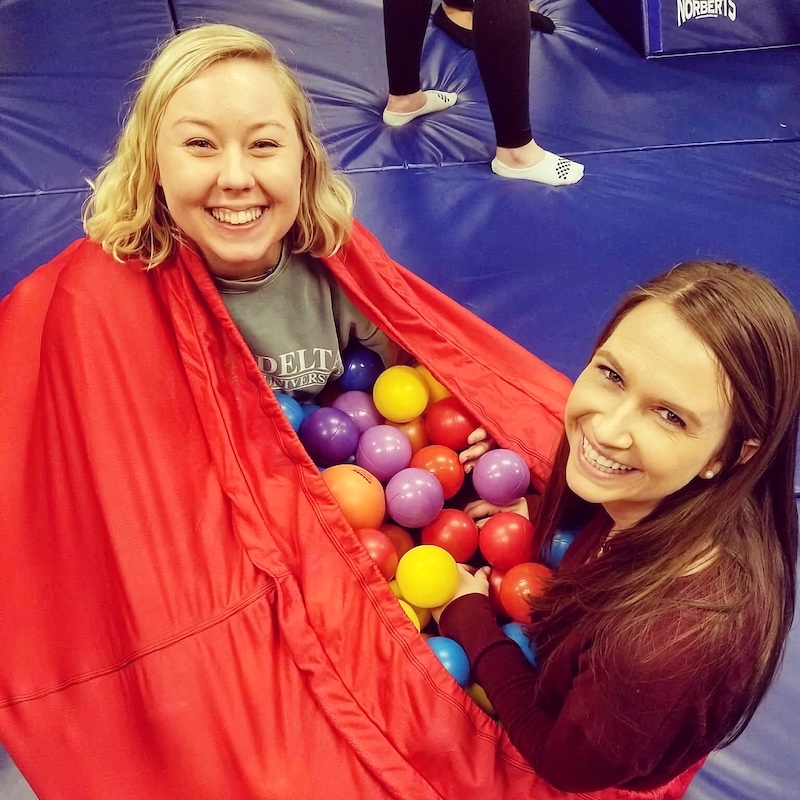
I’ve loved how active and hands-on many of the courses were! Here I am with my friend Niamh trying out a tactile sensory experience in the Pediatrics lab.
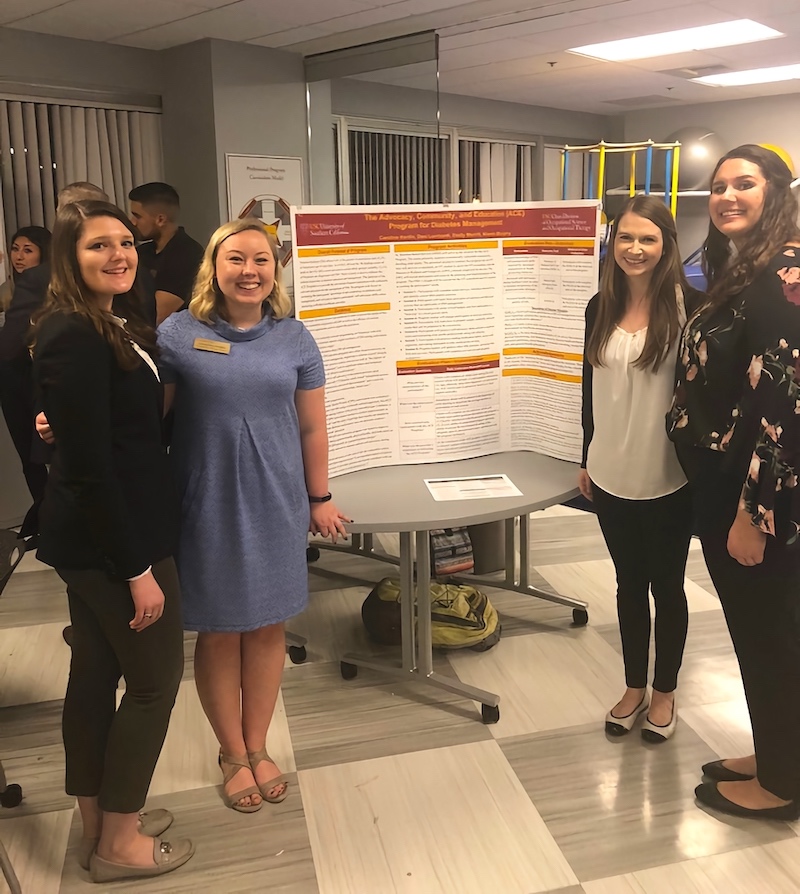
Presenting our diabetes-management program poster for the Occupation-Centered Programs for the Community Course.
In those 22 classes, I’ve been instructed by 26 outstanding faculty members, who each brought their own unique experiences and perspectives to the classroom and the course material. Seriously, the USC Chan faculty members are passionate, experienced, and understanding — they’ve truly made this learning experience a positive one. They’ve challenged my clinical reasoning and they’ve supported my development to becoming an entry-level practitioner.
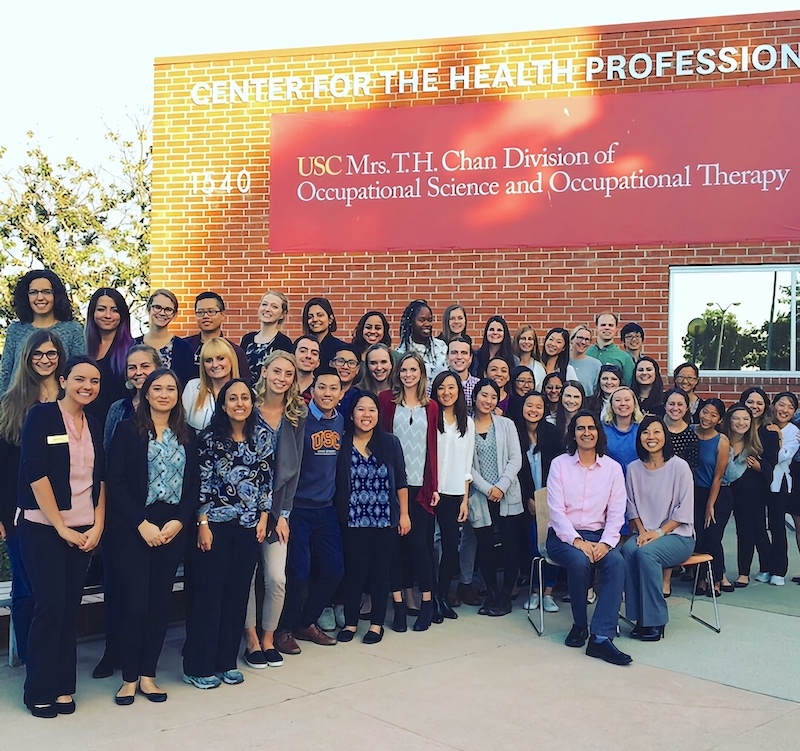
Cohort A after finishing our Pediatrics immersion with Dr. Diaz and Dr. Gunter.
I’ve learned and studied with 136 classmates. These students have come from so many unique backgrounds and will end up working in a wide range of different practice areas. The passion, drive, and enthusiasm in my class has been so impressive, but it has always felt like such a supportive group!

Spent hundreds of hours in class with the awesome Cohort A!
I was inducted into Pi Theta Epsilon, the National Honor Society for Occupational Therapy.

With my fellow PTE Inductees!
I completed 4 fieldwork placements (3 Level I and 1 Level II). Each placement was in a uniquely different practice area: an acute hospital setting, an outpatient forensic mental health setting, a community-based center for older adults, and school-based pediatrics. In each setting, I got to connect with real clients and work through the OT process with them to help them achieve their goals. It was in these environments where I felt the most challenged, but also the most rewarded; getting an A on an exam feels great, but actually helping a client feels WAY better! One more Level II Fieldwork to go this summer!
I’ve dedicated 350+ hours of work in this role as a Student Ambassador. I’ve had the honor of representing the Chan Division over the last year and half and sharing my experiences as a student in this program through this blog, but also by conducting tours and information sessions for prospective students on campus, presentations to pre-OT clubs at universities in Southern California, and tabling at health fairs. Serving as a Student Ambassador has been one of the highlights of my experience in the program, because of the opportunities and experiences it has given me, but also because of the people it’s brought me closer to. This position has allowed me to get to know my 5 amazing coworkers: Ali, Bryan, Erika, Kaitlyn, and Linah, none of whom I knew very well before starting in this role!

The fabulous Student Ambassador team I’ve had the pleasure of working with. Thanks for making work FUN!
I’ve also been so lucky to get to know my supervisors who oversee admissions, recruitment and events for the Division: Kim Kho, Liz Carley, Erin McIntyre, Amber Bennett, and Bianca Ojeda. It’s truly been a pleasure to work with and learn from these women!

The Student Ambassador team together with the whole Admissions, Recruitment, and Events team at our end of the semester lunch!
These two years haven’t been ONLY class and work, however! OT students definitely understand the importance of lifestyle balance 😊
I spent 2 weeks in Australia for my leadership externship, where I learned about occupational therapy education and practice at Griffith University and their affiliate clinical sites.
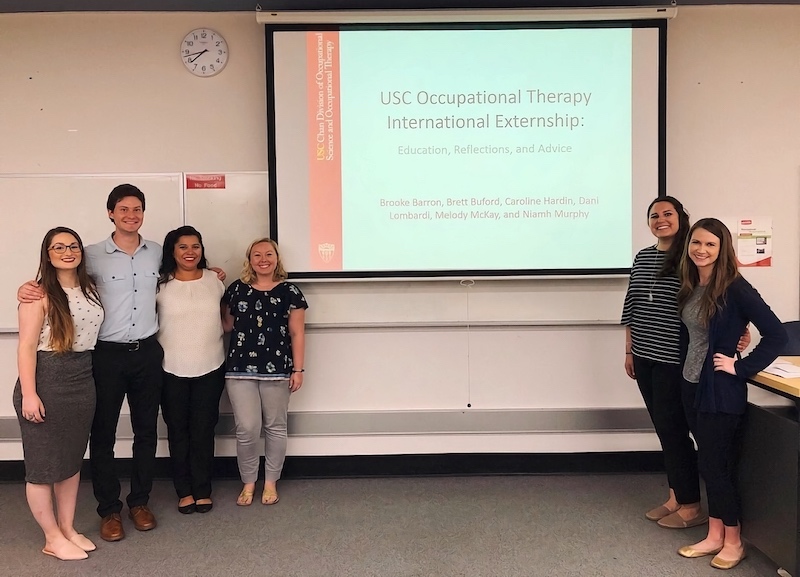
Presenting to Griffith University OT students and faculty about OT education and practice in the US!

Hanging with some Kangaroos!
I’ve supported the Trojans at 11 home football games and tailgates, including 2 homecoming tailgates! Fight On!

Prepping for the Homecoming football game at the Homecoming tailgate.
I’ve spent countless hours at the OT House not only studying, but also spending time with friends and talking about topics other than OT (No Homework Saturdays!!).
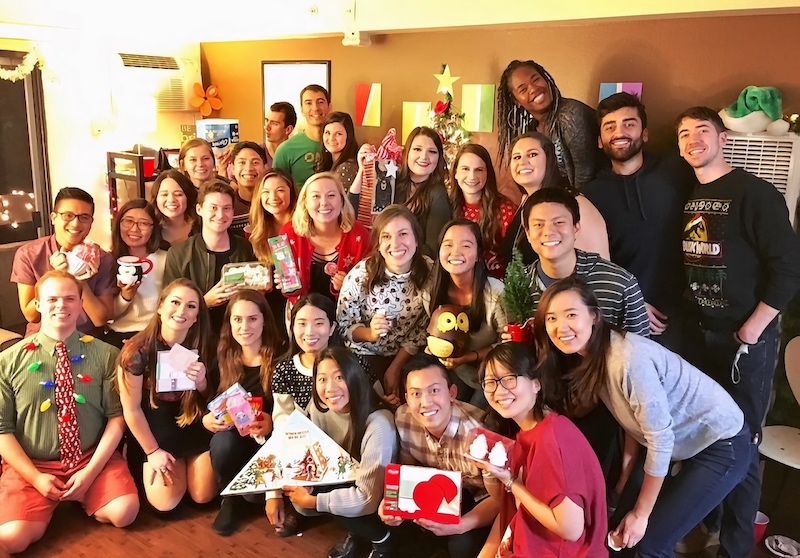
Holiday gift exchange at the OT House!
There’s definitely been time for a few parties, too!
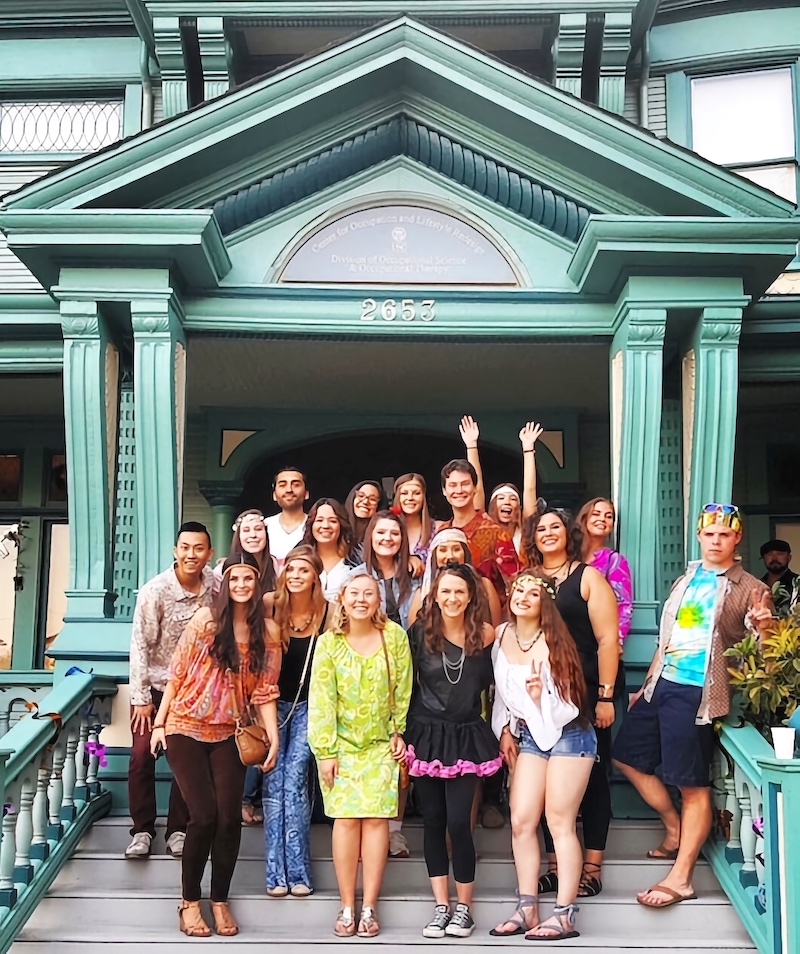
Celebrating the first summer session at the Decades Party, held at the Center for Occupation and Lifestyle Redesign. Love a good themed party!

The annual OT Vegas trip in January.
Finally, I’ve made 7 incredible, lifelong friends in this program: Emily, Niamh, Dani, Brett, Brooke, Hanna, and Heather. I moved from North Carolina to Los Angeles to start this program. I was 21, had just graduated from college, and I was starting grad school in a new city where I didn’t know anyone — it was a scary transition! That feeling went away much quicker than I’d anticipated. I’m so lucky to have found a place in the group of friends that I did. These two years would not have been the same without the laughs, the support, the debriefs, the study sessions, the outings, and the dance parties.
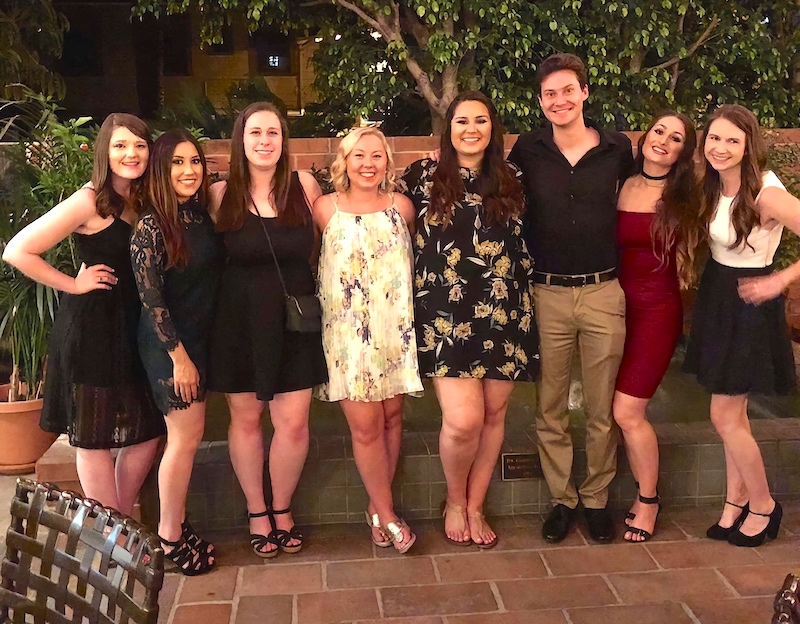
Celebrating finishing exams with my best friends at the end of year prom “ShoOT for the Stars”.
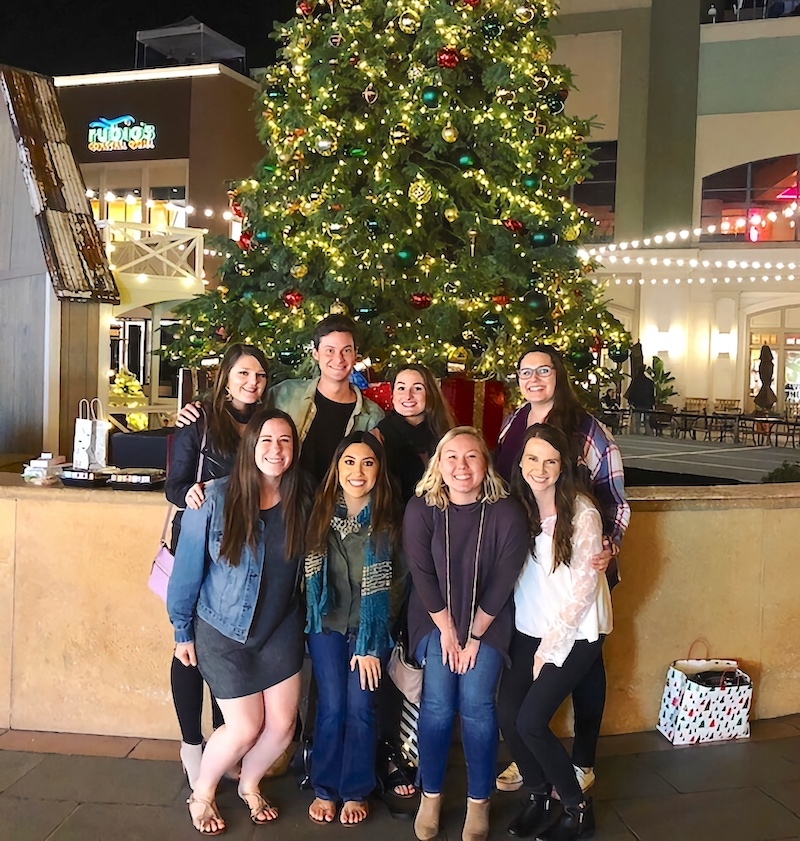
These 7 friends have made the past two years an incredible experience! In my very biased opinion, they are all going to make stellar OTs!
What’s next?
In a few days, I’ll be graduating from the Entry-Level Master’s program, but there are 3 additional things I have to do before I can call myself a registered occupational therapist: (1) Take the Comprehensive Exam; (2) Complete my final 12-week Level II Fieldwork experience; and (3) Take and pass the National Board Certification in Occupational Therapy exam.
I’m staying at USC to get my Doctoral degree (OTD); the program is 1 year and begins in August. I am pursuing the Advanced Clinical Practice track of the OTD, and I will be completing my residency at the USC University Center of Excellence in Developmental Disabilities (UCEDD) at Children’s Hospital Los Angeles. I’m looking forward to spending the upcoming year developing my clinical expertise in the clinical practice area of pediatric mental health!
I’ve wanted to be an Occupational Therapist since the 8th grade, and it’s surreal that I’m so close to accomplishing this dream! I’m so thankful for the learning experience I’ve had these past two years, and I’m looking forward to one more year at USC to gain advanced skills in OT! Thanks to my family, friends, fellow Student Ambassadors, and classmates for the support these two years. And, finally, thanks to the readers — best of luck as you pursue your OT goals!!
⋯
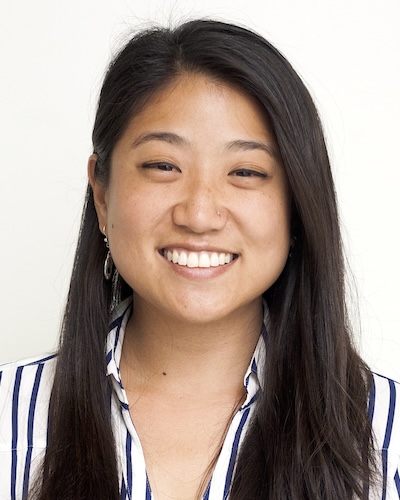
Adventures in OT in Ireland ⟩
April 4, 2018, by Erika
Externships International What are OS/OT?
As part of our Leadership Capstone course that rounds out our final semester at USC Chan (boy, did time FLY!), we are given an opportunity to build our own externship experience during the two weeks leading up to Spring Break. In recognition that OT is a broad field that can work with populations across various settings and life stages and that each students’ journey through OT is highly individual; this is a great opportunity for students to pursue their individual interests and curiosities about the profession while demonstrating their own knowledge and leadership in OT.
The creativity of my fellow classmates’ externship experiences was inspiring! Some students stayed local and observed ergonomic and lifestyle changes that their friends could implement to prevent work-related injuries at their desk jobs. Other students chose to shadow faculty in order to see what goes into working in academia. Still, others expanded upon their community-based OT programs that we crafted last semester and furthered their research and execution to make these programs viable and one step closer to becoming realized.
Additionally, a great number of students went international. As Kaitlyn mentioned, our Global Initiatives office offers organized trips to places like Denmark, Japan, Ghana, Korea, and Australia where you can go with a group of your classmates to visit various OT facilities and universities abroad.
I chose to go international as well! I ended up going to Ireland and with the help of a few classmates and colleagues who were either from Ireland or had previously gone to Ireland during their externships, I was able to set up 8 independent site visits with OTs in 4 different cities across the country. In choosing Ireland, I really wanted to understand what the strengths and barriers were in practicing OT within a public healthcare system, explore interventions that prove successful in Ireland that may not be in America and the cultural implications of that, and gain a sense of the student experience and curriculum for those currently learning OT in Ireland.
My overall experience exceeded any of my expectations and goals. Here is a map and a list of sites I was able to visit:
Map of Externship in Ireland
(Note: Yellow Points = OT Site Visits)
Co. Dublin
Dublin City University & Trinity University
I spoke with OTs and OT students who work in Student Disability Services.
National Rehabilitation Hospital
Inpatient Rehab observation of their Prosthetic Orthotic Limb Absence Programme, Rehabilitation Training Unit Group, Brain Injury Program, and discuss the student experience with Trinity fieldwork students that were placed there.
Co. Galway
Galway University Hospital
I observed OTs working in acute care in the following areas General Med (renal, infectious disease, and endocrine), Med Surgery, and Cardiac ICU.
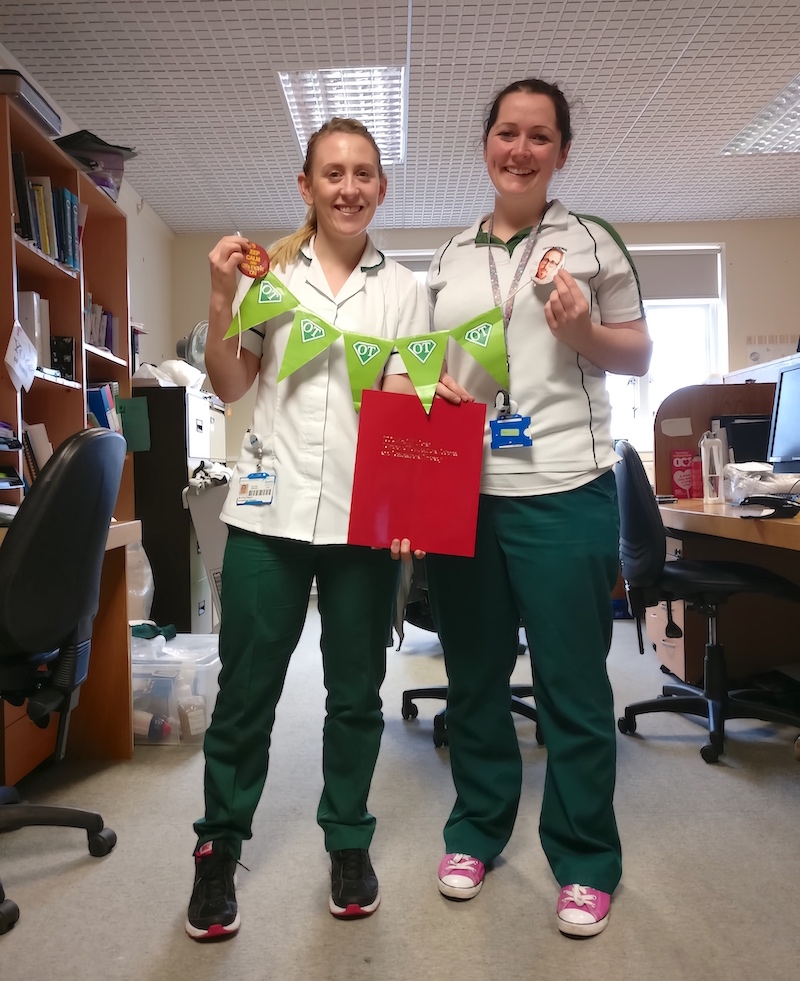
The lovely OTs (Kirby & Gillian) who graciously let me shadow them on their rounds at Galway University Hospital
National University of Ireland, Galway (NUIG)
I met with the Practice Education Coordinator who graciously set me up with many of her OT contacts in Ireland.
Co. Westmeath
Clonbrusk Resource Centre
I spoke with American OTs who have been in Ireland for over 15 years practicing in pediatrics and observed an OT evaluation with a new client.
Co. Cork
St Finbarr’s Hospital
Spoke with an OT working in the hospital’s Inpatient Rehab Geriatrics unit.

Joe and I playing visuospatial and memory games on the big screen TV at the inpatient Geriatric unit at St. Finbarr’s Hospital, Cork
University College Cork (UCC)
Along with my classmate, Joe, we presented on our community-based OT programs to graduating OT students at UCC. Additionally, I was able to sit in in a couple of lectures about interventions that are being introduced into Ireland from other parts of Europe as well as a lecture on working with transgendered clients in Ireland.
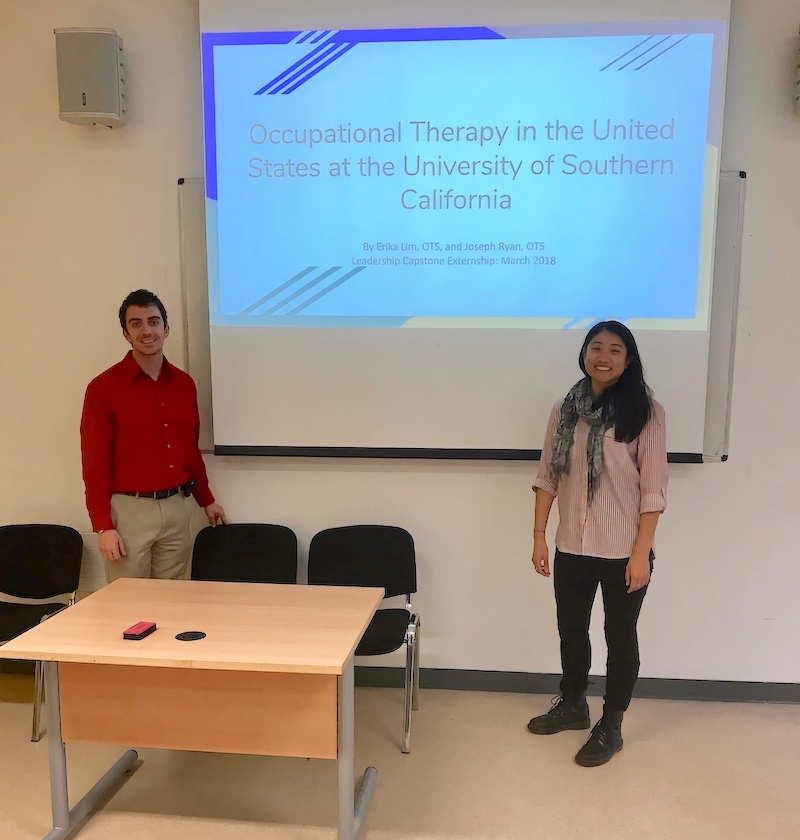
Joe and I presenting on our community-based OT programs to UCC OT students

Sitting in on a lecture about working with the transgendered community in Ireland
On top of this, I was able to travel and sightsee the gorgeous countryside in between site visits. From the terrifying adventure of learning how to drive on the left side of the road to observing Irish families playing in the snow on their first snow day in 10 years to exploring the towering Cliffs of Moher and the teeny artist town of Dingle to celebrating St. Paddy’s day in Dublin, Ireland was nothing short of extraordinary and this was most often shown through the warmth of its people and culture.

Biking the Greenway from Achill Island to Newport
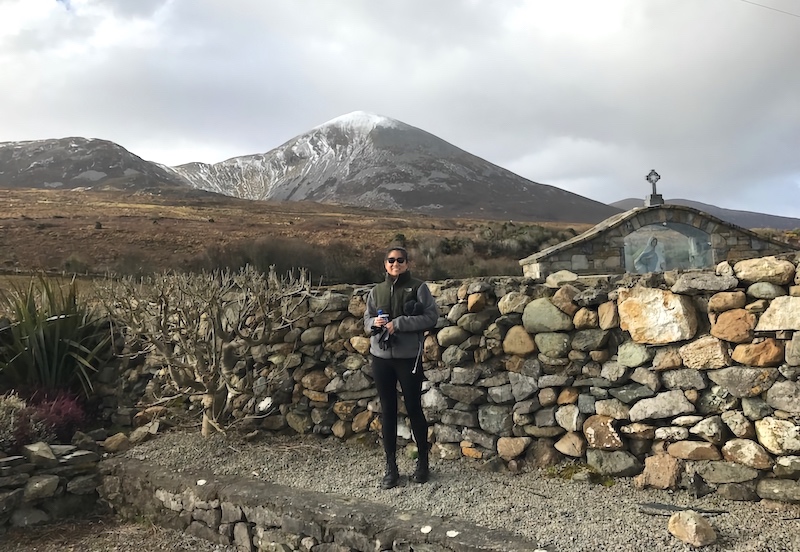
One of my biggest achievements: climbing Croagh Patrick, the mountain behind me!

The Cliffs of Moher. Breathtaking.
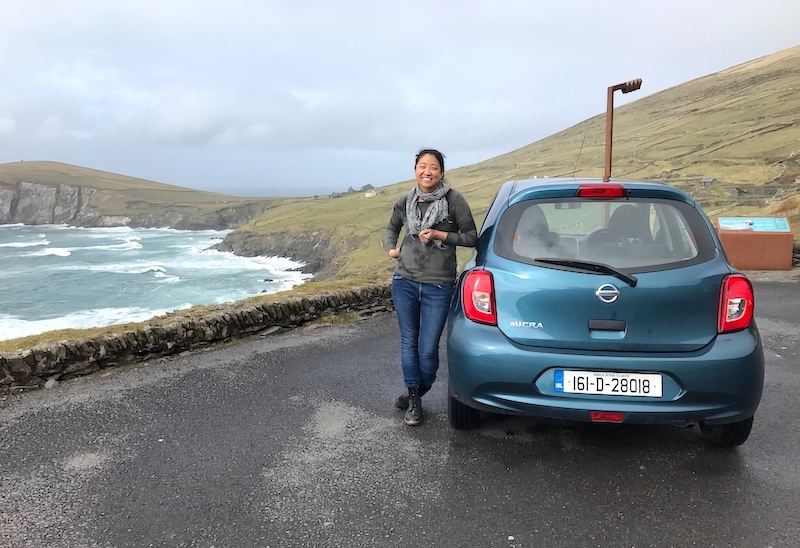
My rental car Bertie and me. I fell in love with teeny cars.

St. Paddy’s day at the Guinness Storehouse, Dublin!
Sláinte! (Cheers! in Irish)
⋯

Making Our Mark in Denmark: My Leadership Externship Experience ⟩
April 2, 2018, by Kaitlyn
Externships International What are OS/OT?
Denmark has been one of my top places to visit for the past few years now, as I knew that they were consistently ranked one of the happiest countries (if not the happiest) in the world. I was particularly interested in their efforts in eco sustainability, health care system, biking culture, and “hygge”. Thus, when I was offered to go to Denmark for my leadership externship for two weeks in collaboration with USC Global Initiatives and Southern Denmark University, I knew that 1) I had to go and 2) it was meant to be (duh!).

Views over Copenhagen
During the two weeks, our schedule was jam-packed with presentations, activities, and cultural exchanges! In the first week, my team and I presented to Metropolitan University College, Southern Denmark University, and University College Lillebaelt on how education and healthcare systems function in America, what USC’s OT program looks like specifically, and some of the research being conducted at USC. As much as we were the ones providing information to Denmark’s school departments, students, and faculty, they also provided an abundant amount of information about themselves, their research, and their culture in return.
During the second week, we visited Hammel Neurorehabilitation and attended an Ergo Symposium hosted at Southern Denmark University, where Dr. Renee Taylor, one of the authors of a textbook we use in the program, was a speaker! In that same week, we had the amazing opportunity to shadow occupational therapists at Odense University Hospital in various departments (i.e., hand therapy, pediatrics, TBI, trauma, oncology, etc.). While shadowing at Odense University Hospital, it was evident to me that the free healthcare system adopted by Denmark affects the way OTs practice there.
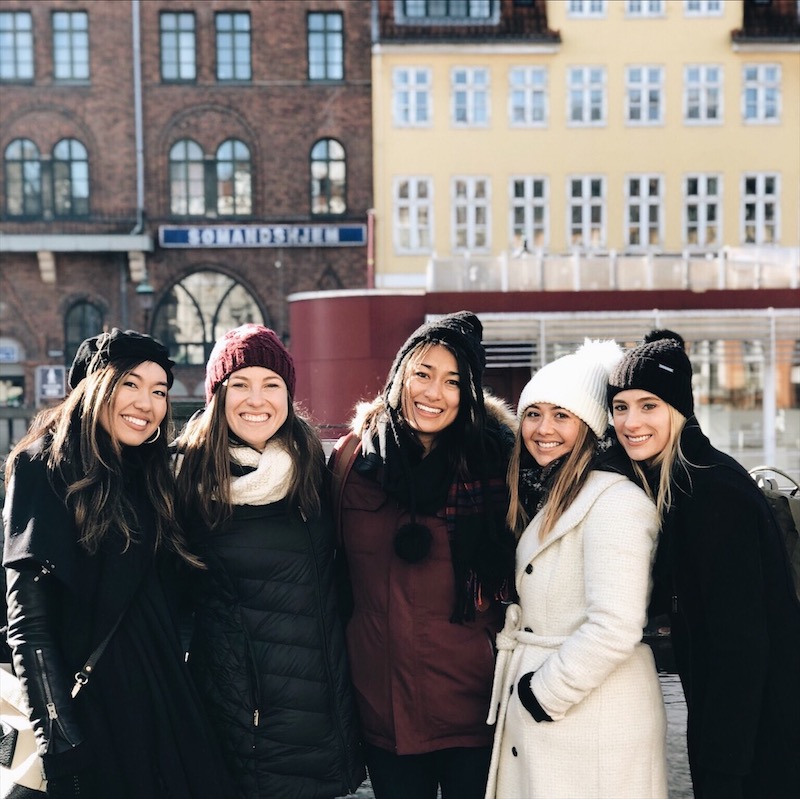
Visiting Nyhavn!
Throughout the two weeks, we were completely immersed in Danish culture and ways of living, and I can honestly say that it has changed my perspective on life. Here are just a few of the things I learned along the way:
The importance of work-life balance
In Denmark, employees receive 6 week paid vacations (which does not include sick days) and 1 year paid maternity leave. Speaking of sick days, it is actually looked down upon if you go into work sick (if you’re sick, you’re sick . . . Don’t be selfish and contaminate the work environment, they say!). Overall, the Danish really embody the idea that when you leave work, you actually leave work and live your life.
The importance of saying what you mean and meaning what you say
Here in America, it is so common for me to say to almost everyone, “Hi! How are you?” In Denmark, however, this customary greeting does not equivalently translate. We were told that you do not ask someone, “How are you?,” unless you are prepared to get an actual answer about how they are doing. In short, people in Denmark do not say things unless they mean it. For example, they will not offer to do something they do not want to do, and will not sugarcoat things or beat around the bush.
The importance of humility
In the working world of America, we like to rack up all of the accomplishments we can so that we can put them on our resume. This is something we have to do in order to be a competitive applicant. Interestingly enough, they do not do that in Denmark. For the Danish, it is actually looked down upon if you try to upstage the people around you and/or try to make yourself stand out and look better. Showing off how much money you have, how great your career is, etc. are big no-no’s in Denmark! This idea relates to Denmark’s emphasis on equality (see: below bullet point).
The importance of equality
The emphasis on equality is reflected in so many ways in Denmark. For example, education is completely free (as a university student you also get a monthly stipend), and so is healthcare (it doesn’t matter if you’re homeless or if you’re the richest person in Denmark, as both will get the same level of care).
The importance of trust
They trust everyone in Denmark. On one particular day, we walked by a restaurant and there was a peaceful child sleeping in a stroller outside without the parents! It is probably safe to say that would not happen here in America, but it’s refreshing to know that there is so much inherent trust within the people in Denmark.

Walking along the infamous rainbow panoramic skywalk at ARoS Aarhus Kunstmuseum
Taken altogether, this experience has been a highlight in my time here as a USC OT student. I’ve always loved traveling, and this trip was confirmation why. The world is so big, and there is always more to explore. It is so incredibly easy to simply go through the day-to-day motions and be stuck in the bubble of Los Angeles, but traveling always grounds me and forces me to expand my ways of thinking. There is more to life than the life lived here in LA.
Mange tak (many thanks) to Dr. Danny Park, Benedict of the Global Initiatives Team, the kindhearted students and Dr. Jeanette Christensen of Southern Denmark University, and my wonderful team of 7 for a life-changing international experience.

⋯
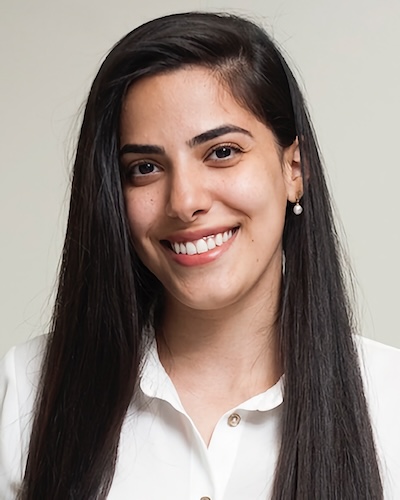
After Graduation: Now What? ⟩
March 19, 2018, by Linah
Admissions Life Hacks What are OS/OT?
Start practicing or further your degree?
NBCOT, OTED, OPT, HIJKLMNOP . . .
As many already know, the NBCOT is the national board exam for occupational therapy. In other words, in order to get licensed as an occupational therapist in the US, passing this test is a requirement. Luckily, USC Chan Division prepares its students well for it by requiring them to sit for the comprehensive exam at the end of the master’s degree. During this exam all the information related to OT is tested, and this serves as an adequate rehearsal for the NBCOT. The method works evident by how USC has maintained a passing rate among students as high as 99%! This option is not limited to US citizens. International students can take advantage of the OPT (Optional Practical Training) year that their F-1 student visa allows, get licensed, and practice OT in the US, too.
In order for an international student to sit for the NBCOT, they would need to go through OTED first. The Occupational Therapist Eligibility Determination (OTED) process requires a few documents that are better brought from back home. Documents like detailed syllabi for each course studied during undergrad, official transcripts, a letter from the undergrad’s program director acknowledging the student’s attendance, and more. The full list of requirements can be found here. All I am saying is, if you’re an international student planning to take advantage of your OPT then better start early (even before starting your post-professional masters) to collect all the required documents. Many of which would be much easier to attain while you’re still in your home country.
OTD vs PhD
Here’s the breakdown: an OTD is generally 2 years long, clinical based, and prepares students to be faculty members and clinicians. It mainly focuses on preparing students to be leaders for the profession. It is a doctoral level degree recognized in the US, however it is yet to be recognized as so in other countries where this degree does not exist yet. It is a great option for those who plan to work in faculty positions that allow clinical practice. The OTD prepares students to be administrative leaders and helps them specialize in emerging clinical fields in OT.
The PhD on the other hand lasts about 4 to 5 years on average, research based, and prepares students to be researchers in the field. This PhD program in USC is literally the first ever PhD in occupational science, and it is fully funded. This means it does not require a tuition, and offers a monthly stipend to its candidates.
Thankfully, being a master’s student in USC offers numerous opportunities to explore one’s interests. This includes visiting clinical sites, volunteering in research labs, and even sitting down with some respectable names in occupational science research who just happen to be part of our faculty!
⋯





